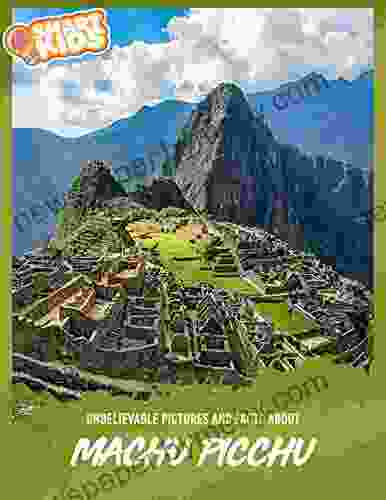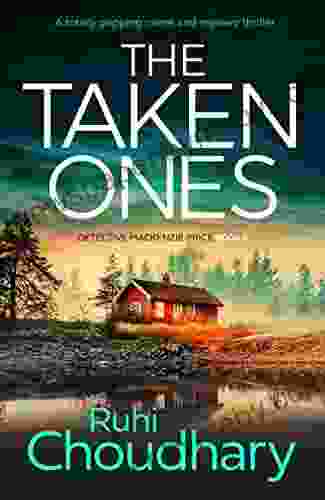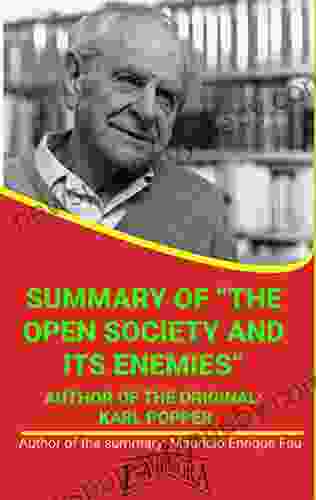Unbelievable Pictures and Facts About Machu Picchu: Unraveling the Mysteries of the Lost City

Nestled amidst the breathtaking Andes Mountains of Peru, Machu Picchu stands as a testament to the ingenuity and grandeur of the ancient Incan civilization. This iconic citadel, shrouded in mystery and surrounded by stunning natural beauty, continues to captivate the imaginations of travelers and historians alike. In this comprehensive exploration, we unveil the captivating pictures and mind-boggling facts about Machu Picchu, inviting you on a journey to unravel the secrets of the Lost City.
Machu Picchu, meaning "Old Peak" in Quechua, was built by the Inca emperor Pachacuti in the 15th century. Perched at an altitude of approximately 8,000 feet above sea level, its strategic location atop a ridge provided panoramic views of the surrounding valleys and mountains, offering both protection and a breathtaking spectacle. The Incas believed Machu Picchu to be sacred, a place of worship and pilgrimage, and it was abandoned around 100 years after its construction, possibly due to an outbreak of smallpox.
Machu Picchu is renowned for its extraordinary architectural achievements, utilizing precision stonework and masterful engineering techniques. The citadel's structures, built primarily from granite blocks, fit together seamlessly without the use of mortar, showcasing the Incas' exceptional craftsmanship. Among the most notable landmarks are:
4.1 out of 5
| Language | : | English |
| File size | : | 15503 KB |
| Text-to-Speech | : | Enabled |
| Screen Reader | : | Supported |
| Enhanced typesetting | : | Enabled |
| Word Wise | : | Enabled |
| Print length | : | 45 pages |
| Lending | : | Enabled |
The Intihuatana Stone: This carved stone, located at the Temple of the Sun, is believed to have played a significant role in Incan astronomy and rituals.
The Temple of the Three Windows: Offering panoramic views of the Vilcanota River and the surrounding mountains, this temple is adorned with intricate stonework and trapezoidal windows.
The Royal Tomb: This structure, believed to be the burial site of Pachacuti, features a large central chamber with niches containing mummies and offerings.
Photographs of Machu Picchu have captivated the world, capturing the essence of its architectural beauty, natural grandeur, and historical significance. These images, taken from various perspectives and under different lighting conditions, reveal the intricate details of the citadel's structures and the surrounding landscapes.
Sunrise over Machu Picchu: As the first rays of dawn illuminate the citadel, photographers capture the ethereal beauty of Machu Picchu emerging from the mist, bathed in golden light.
Panoramic vistas: Breathtaking panoramic shots showcase the vastness of Machu Picchu, encompassing the Urubamba River, the towering peaks of Huayna Picchu and Machu Picchu Mountain, and the surrounding cloud forests.
Intimate details: Close-up images reveal the intricate stonework, carvings, and textures that adorn the citadel's structures, providing an up-close look at the Incas' exceptional craftsmanship.
Beyond its captivating beauty, Machu Picchu holds a wealth of intriguing facts that add to its allure:
Rediscovery: Machu Picchu remained largely unknown to the outside world until 1911, when American historian Hiram Bingham brought it to international attention.
Astronomy: The Incas had a sophisticated understanding of astronomy, and the layout of Machu Picchu is believed to align with celestial events, particularly the summer solstice.
Population: It is estimated that Machu Picchu housed a population of approximately 750-1,200 people at its peak.
Agriculture: The Incas utilized agricultural terraces to cultivate crops on the steep slopes of Machu Picchu, maximizing their ability to grow food in this mountainous environment.
Tourism: Machu Picchu is one of the most popular tourist destinations in South America, attracting millions of visitors each year who come to witness its wonders firsthand.
To fully appreciate the beauty and history of Machu Picchu, planning your visit is essential. Here are some recommendations to ensure a memorable experience:
Best time to visit: The best time to visit Machu Picchu is during the dry season (April-October),when rainfall is minimal and the weather is generally clear.
Booking accommodations: Book your accommodation well in advance, as availability can be limited during peak season. There are various options available, ranging from budget hostels to luxurious hotels in nearby Aguas Calientes.
Purchasing train tickets: Train tickets from Cusco to Aguas Calientes, the gateway to Machu Picchu, should be Free Downloadd in advance, especially during peak season.
Hiking options: There are several hiking options available, including the classic Inca Trail and the shorter Machu Picchu Trail. Choose a hike that suits your fitness level and time constraints.
Guided tours: Hiring a local guide can enhance your visit by providing valuable insights into the history, culture, and architecture of Machu Picchu.
Machu Picchu stands as a testament to the ingenuity, artistry, and spiritual beliefs of the ancient Incan civilization. Its captivating beauty, intriguing history, and mind-boggling facts continue to inspire and fascinate people worldwide. This article has provided a glimpse into the wonders of Machu Picchu, enticing you to embark on a journey to unravel the secrets of the Lost City and witness its unmatched splendor firsthand. As you wander through its ancient streets and admire its architectural marvels, let the spirit of the Incas envelop you, transporting you to a time when this sacred citadel flourished amidst the Andean peaks.
4.1 out of 5
| Language | : | English |
| File size | : | 15503 KB |
| Text-to-Speech | : | Enabled |
| Screen Reader | : | Supported |
| Enhanced typesetting | : | Enabled |
| Word Wise | : | Enabled |
| Print length | : | 45 pages |
| Lending | : | Enabled |
Do you want to contribute by writing guest posts on this blog?
Please contact us and send us a resume of previous articles that you have written.
 Book
Book Novel
Novel Page
Page Chapter
Chapter Text
Text Story
Story Genre
Genre Reader
Reader Library
Library Paperback
Paperback E-book
E-book Magazine
Magazine Newspaper
Newspaper Paragraph
Paragraph Sentence
Sentence Bookmark
Bookmark Shelf
Shelf Glossary
Glossary Bibliography
Bibliography Foreword
Foreword Preface
Preface Synopsis
Synopsis Annotation
Annotation Footnote
Footnote Manuscript
Manuscript Scroll
Scroll Codex
Codex Tome
Tome Bestseller
Bestseller Classics
Classics Library card
Library card Narrative
Narrative Biography
Biography Autobiography
Autobiography Memoir
Memoir Reference
Reference Encyclopedia
Encyclopedia John Calvert
John Calvert Joan Lowery Nixon
Joan Lowery Nixon Mona Bijjani
Mona Bijjani Winona Guo
Winona Guo Jiun Yun
Jiun Yun Marilyn Jansen
Marilyn Jansen Ravi Hutheesing
Ravi Hutheesing Victoria Kann
Victoria Kann Jung H Pak
Jung H Pak Theo Fennell
Theo Fennell Jim Vernes
Jim Vernes Joseph A Tainter
Joseph A Tainter John G Robertson
John G Robertson Scott Wlaschin
Scott Wlaschin Mike Shepherd
Mike Shepherd Linda Goldberg
Linda Goldberg Prem Carnot
Prem Carnot Joe Zammit Lucia
Joe Zammit Lucia Peter Popham
Peter Popham John C Yungjohann
John C Yungjohann
Light bulbAdvertise smarter! Our strategic ad space ensures maximum exposure. Reserve your spot today!

 Gene SimmonsMuch Ado About Nothing - No Fear Shakespeare: A Journey into Love, Wit, and...
Gene SimmonsMuch Ado About Nothing - No Fear Shakespeare: A Journey into Love, Wit, and... Clark BellFollow ·8.6k
Clark BellFollow ·8.6k Branson CarterFollow ·16.6k
Branson CarterFollow ·16.6k Mike HayesFollow ·10k
Mike HayesFollow ·10k George BellFollow ·16.9k
George BellFollow ·16.9k Hugh BellFollow ·7.7k
Hugh BellFollow ·7.7k Thomas HardyFollow ·6.2k
Thomas HardyFollow ·6.2k Chinua AchebeFollow ·15k
Chinua AchebeFollow ·15k Ivan TurnerFollow ·6.8k
Ivan TurnerFollow ·6.8k

 Jermaine Powell
Jermaine PowellThe Ultimate Guide to Unlocking Consistent Profitable...
Introducing the 2nd Edition of the...

 Yasunari Kawabata
Yasunari KawabataMinute Microskills Videos: The Ultimate Guide for Visual...
Unlock Your Potential with Bite-Sized Video...
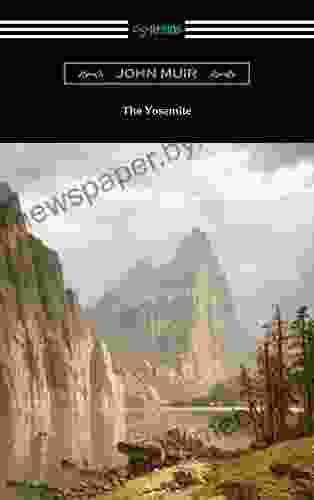
 Nathan Reed
Nathan ReedUnveiling the Wonders of Yosemite through John Muir's...
Immerse yourself in the breathtaking beauty...

 Gabriel Garcia Marquez
Gabriel Garcia MarquezWhen You Find Me Novel: A Gripping Mystery Unravels
In the sleepy...
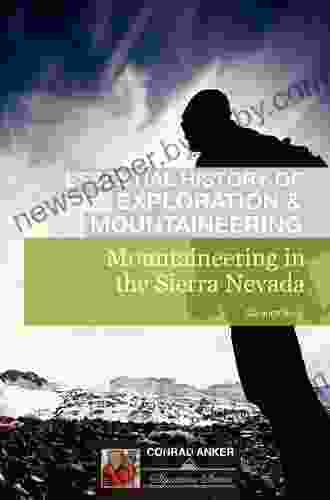
 Esteban Cox
Esteban CoxMountains of California: An Essential History of...
From the towering...
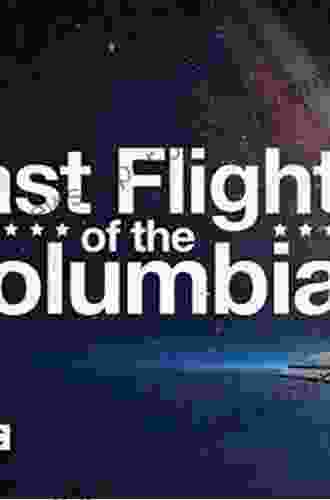
 Devin Ross
Devin RossComm Check: Unveiling the Heartbreaking Final Flight of...
Comm Check: The Final Flight of Shuttle...
4.1 out of 5
| Language | : | English |
| File size | : | 15503 KB |
| Text-to-Speech | : | Enabled |
| Screen Reader | : | Supported |
| Enhanced typesetting | : | Enabled |
| Word Wise | : | Enabled |
| Print length | : | 45 pages |
| Lending | : | Enabled |


